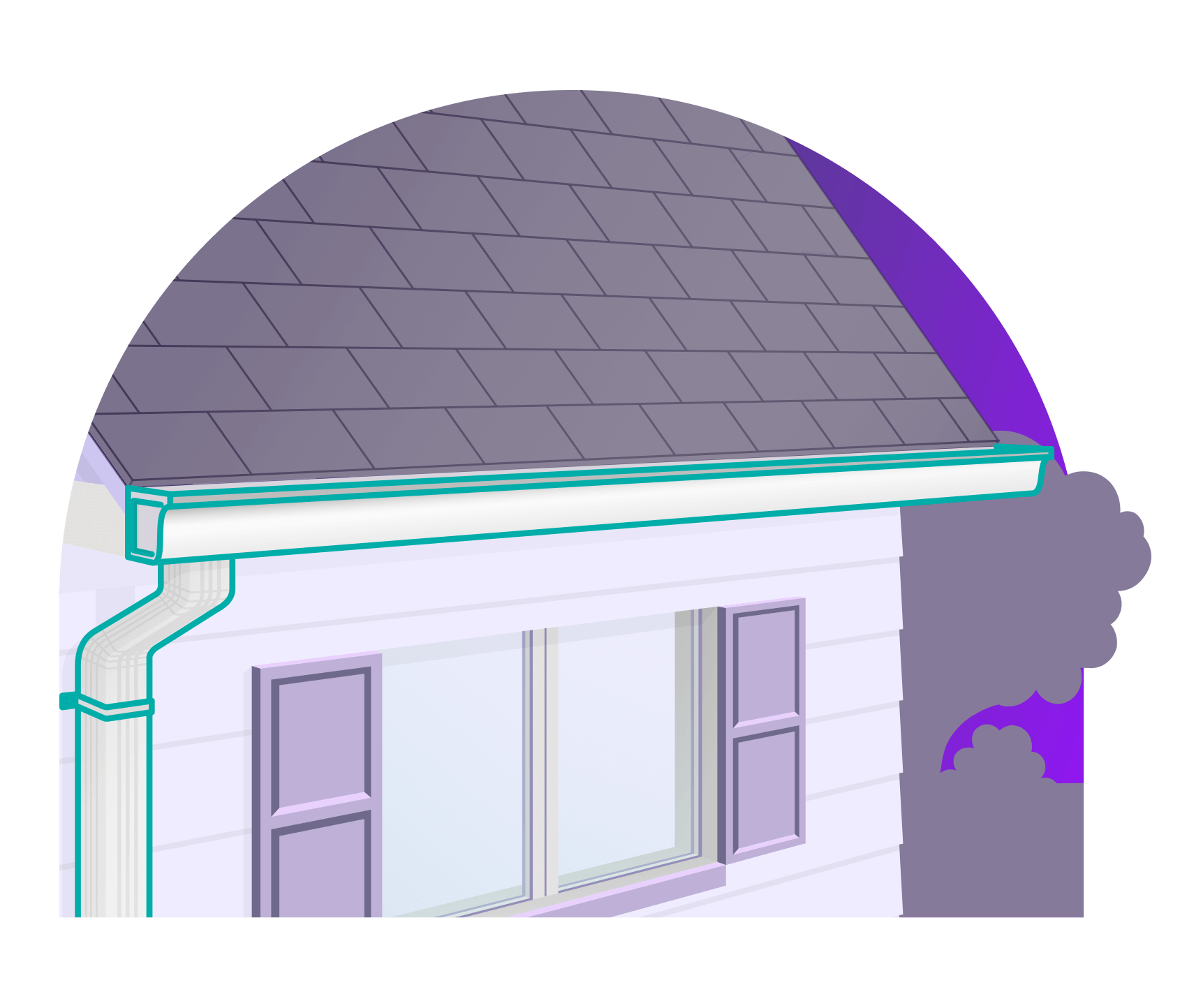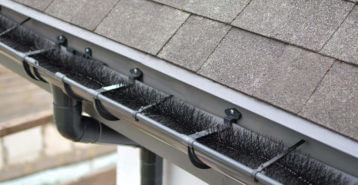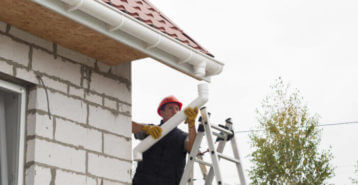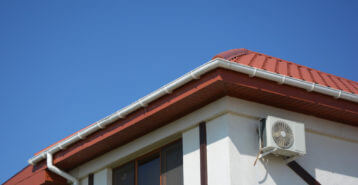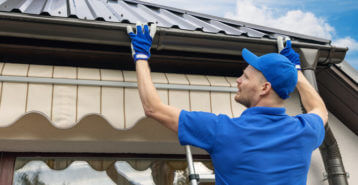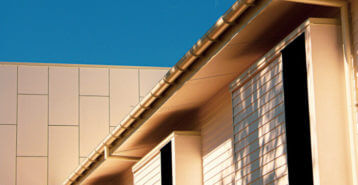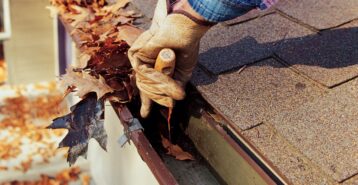Sectional Gutters: A Guide
A well-designed gutter system is one of the best ways to protect your home from costly water damage caused by rain or snow. Choosing the right size, style, and type of gutter system ensures that your home can handle everything from light showers to heavy storms. One popular option is sectional gutters, a practical, budget-friendly solution that’s easy to customize. In this guide, we’ll explain how much sectional gutters cost, how they compare to other types, and what factors affect your costs.
What Are Sectional Gutters?
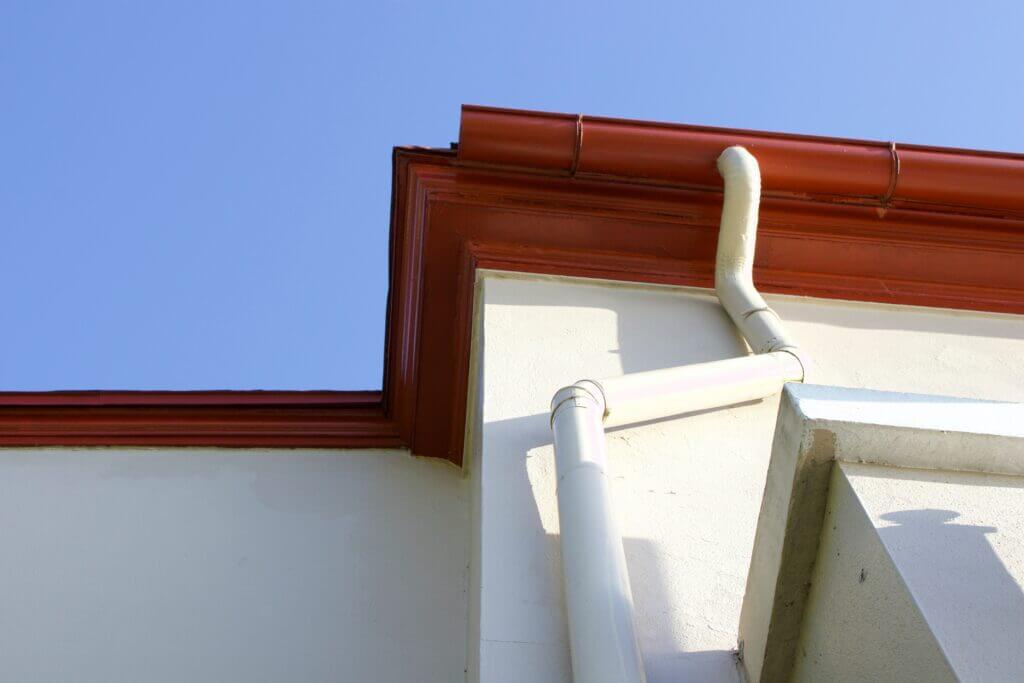
Sectional gutters are sold in a variety of materials, from aluminum to vinyl to galvanized steel and zinc. Unlike seamless gutters, which are custom roll-formed onsite, sectional gutters are made from pre-cut pieces that are assembled to fit your home’s roofline. Each section is overlapped by two to six inches at the seams to help prevent leaks and keep water flowing properly.
Professional gutter contractors install both types of gutters. However, sectional gutters cost less when installed by skilled homeowners.
Sectional Gutter Cost
The average cost of sectional gutters in the U.S. depends on the material and installation method. Vinyl sectional gutters are the most affordable option, averaging around $3 to $11 per linear foot. Aluminum gutters typically cost between $6 and $20 per linear foot. For a more durable option, galvanized steel gutters average about $23 per linear foot, Zinc gutters, a premium choice, cost around $21 per linear foot on average. For a standard home needing about 200 linear feet of gutters, total project costs can range from $600 to $7,400. However, this depends on material and labor rates. Sectional gutters may require more maintenance than seamless options. However, they’re an affordable and flexible choice for budget-conscious homeowners.
| Sectional Gutter Material | Cost |
|---|---|
| Vinyl | $3 - $11 per linear foot |
| Aluminum | $6 - $20 per linear foot |
| Galvanized steel | $9 - $37 per linear foot |
| Zinc | $14 - $28 per linear foot |
Additional Costs to Consider
Gutter style and size significantly impact the total cost. The most common styles are half-round and K-style, available in 5-inch or 6-inch sizes. Larger sizes can hold more water, making them ideal for heavy rainfall areas.
Homes with multiple stories or complex rooflines may face higher costs, as they require more gutters and downspouts than simpler roof designs.
Although sectional gutters cost less than seamless, they need more maintenance due to their seams and joints, which can lead to leaks and blockages over time. Balancing initial savings with potential maintenance is key when choosing a gutter system.


The Pros and Cons of Sectional Gutters
Sectional gutters are a popular choice for homeowners due to their affordability and ease of installation, but they come with some trade-offs. Understanding the pros and cons can help you decide if they are the right fit for your home’s needs and long-term maintenance.
-
Pros
- DIY friendly
- Less expensive
- Various design options
-
Cons
- Seam leakage
- Prone to repairs
- Lower durability
Pros
- DIY-Friendly: Sectional gutters are ideal for homeowners who want to tackle installation themselves. With basic tools and home improvement skills, you can manage the project without hiring a professional.
- Affordable: Sectional gutters are a budget-friendly option that helps protect your home without the higher price tag of seamless gutters. They offer reliable performance at a lower upfront cost.
- Customizable: Available in a variety of materials, styles, and colors, sectional gutters give you the flexibility to match your home’s exterior and personal style.
Cons
- Seam Leakage: Sectional gutters have seams at every joint, which increases the chances of leaks over time. Regular maintenance is needed to keep water flowing properly and prevent damage.
- More Repairs: These gutters may require more frequent repairs, especially as they age. Loose sections or worn-out seals can lead to higher maintenance costs over time.
- Less Durable: Sectional gutters are generally less durable than seamless options. They may have a shorter lifespan and could need replacement sooner, particularly if exposed to heavy weather conditions.
No matter which type of gutter system you choose, proper installation is key to making it last for decades. Keep in mind, though, that local climate and exposure to harsh weather will play a big role in how long your gutters hold up over time.
Sectional vs. Seamless Gutters
Both seamless and sectional gutters are designed to move stormwater safely away from your roof and foundation—but there are key differences to consider. One downside of seamless gutters is that they’re most commonly made from aluminum. While some contractors offer seamless galvanized steel options, these tend to be more expensive and can be prone to rust over time.
Sectional gutters, on the other hand, are often chosen by homeowners looking for an affordable and DIY-friendly option. Vinyl sectional gutters are lightweight, easy to install, and available in a wide range of colors to match your home’s exterior. However, vinyl is the least durable gutter material and may crack or warp over time. Aluminum sectional gutters are also lightweight and easier to install than steel, but the seams and connection points can make them more prone to leaks and less sturdy overall.
Which Type of Gutter Is Right for My Home?
Choosing between sectional and seamless gutters depends on your budget, DIY skills, and long-term maintenance goals. Sectional gutters are cost-efficient and customizable. They’re a good choice for homeowners who want flexibility and don’t mind a DIY project. These gutters may need more upkeep than seamless options. However, when installed properly, they can still protect your home from water damage. With the right materials and care, sectional gutters can last for many years.
Compare top-rated gutters pros in your area.
Read real homeowner reviews, explore qualifications, and view promotions. Modernize makes it easy to browse professionals and find one that will be perfect for your project.
